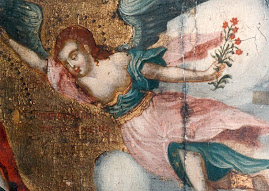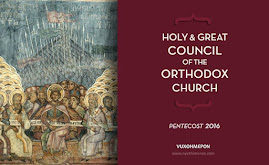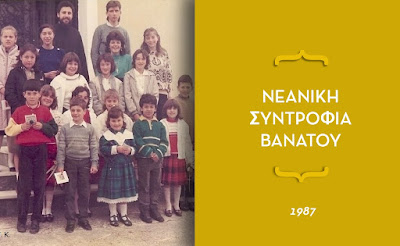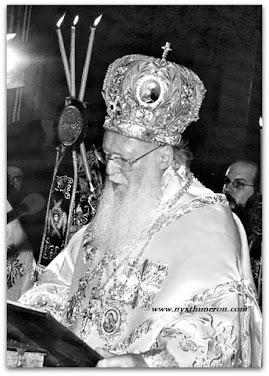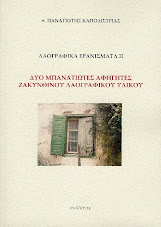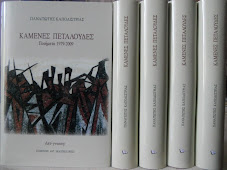Του Dmytro Horyevoy
Απόδοση στα ελληνικά: Αλέξανδρος Ρωμηόπουλος
Μετά την παραχώρηση του Τόμου της Αυτοκεφαλίας, η Ορθόδοξη Εκκλησία της Ουκρανίας (ΟΕΟ) αναμένει την αναγνώριση και την εγκαθίδρυση ευχαριστιακής κοινωνίας με όλες τις άλλες Αυτοκέφαλες Ορθόδοξες Εκκλησίες. Μερικές Εκκλησίες, όπως π.χ. οι Εκκλησίες Κύπρου και Αλβανίας, εξέφρασαν μια σειρά από αμφιβολίες σχετικά με τις χειροτονίες των εκπροσώπων της ΟΕΟ, καθώς και αναφορικά με την απόφαση του Οικουμενικού Πατριαρχείου, της 11ης Οκτωβρίου 2018, να αποδεχθεί στους οικείους ιερατικούς τους βαθμούς και χωρίς αναχειροτονία, τους κληρικούς του πρώην «Πατριαρχείου Κιέβου» (ΠΚ) και της πρώην «Ουκρανικής Αυτοκέφαλης Ορθόδοξης Εκκλησίας» (ΟΑΟΕ). Ο Οικουμενικός Πατριάρχης Βαρθολομαίος, απαντώντας, απέστειλε στους Προκαθημένους των Εκκλησιών αυτών μια ιστορικοκανονική μελέτη, η οποία αποδεικνύει την εγκυρότητα των χειροτονιών που γίνονται μέσα σε σχίσμα
(σ.σ. δηλαδή, ότι μετά την αποκατάσταση του σχίσματος και την επιστροφή των σχισματικών στην κοινωνία με την κανονική Εκκλησία δεν απαιτείται αναχειροτονία), με την προϋπόθεση όμως ότι υπάρχει αποστολική διαδοχή.
(σ.σ. Πρόκειται για την «ΠΡΑΓΜΑΤΕΙΑ ΠΕΡΙ ΤΟΥ ΚΥΡΟΥΣ ΤΗΣ ΧΕΙΡΟΤΟΝΙΑΣ ΚΛΗΡΙΚΩΝ ΥΠΟ ΕΠΙΣΚΟΠΟΥ ΚΑΘΗΡΗΜΕΝΟΥ ΚΑΙ ΣΧΙΣΜΑΤΙΚΟΥ ΧΕΙΡΟΤΟΝΗΘΕΝΤΩΝ, ΣΥΝΤΑΧΘΕΙΣΑ ΥΠΟ ΒΑΣΙΛΕΙΟΥ ΑΡΧΙΕΠΙΣΚΟΠΟΥ ΑΓΧΙΑΛΟΥ» το έτος 1887).
Το πλήρες κείμενο της μελέτης στα Ρωσικά,καθώς και μία
συνοπτική έκδοση με τις βασικές αρχές, έχει δημοσιευθεί στην ιστοσελίδα Cerkvarium, ενώ το πρωτότυπο ελληνικό κείμενο υπάρχει στην
επίσημη ιστοσελίδα του ΟικουμενικούΠατριαρχείου. Η ουσία αυτής τις ιστορικοκανονικής μελέτης συνίσταται στο ότι οι χειροτονίες -ακόμη και αν έχουν τελεσθεί στο σχίσμα, αλλά από έναν επίσκοπο ο οποίος έχει αποστολική διαδοχή- είναι έγκυρες. Γι’ αυτό και οι κληρικοί που χειροτονούνται υπό αυτές τις συνθήκες πρέπει
(σ.σ. μετά την επιστροφή τους από το σχίσμα στην κανονική Εκκλησία) να γίνονται αποδεκτοί στην εκκλησιαστική κοινωνία στον οικείο ιερατικό τους βαθμό. Αυτό που είναι σημαντικό είναι οι κληρικοί αυτοί να έχουν αποστολική διαδοχή.
Δεν υπάρχει καμία αμφιβολία ότι οι επίσκοποι του πρώην ΠΚ έχουν αποστολική διαδοχή, επειδή οι περισσότεροι από αυτούς χειροτονήθηκαν από τον πρώην Πατριάρχη Φιλάρετο, ο οποίος εγκατέλειψε τη Ρωσική Ορθόδοξη Εκκλησία μαζί με τον κανονικό επίσκοπο του Ποτσάεφ Ιάκωβο (Παντσιούκ). Επιπλέον, σύμφωνα με τον 1ο κανόνα των Αγίων Αποστόλων, η χειροτονία του επισκόπου θεωρείται έγκυρη εάν έχει τελεσθεί από τουλάχιστον δύο επισκόπους. Δηλαδή, οι δύο αυτοί, ο πρώην Πατριάρχης Φιλάρετος και ο επίσκοπος Ιάκωβος, ήταν αρκετοί για να χειροτονούν επισκόπους, κατά την δεκαετία του 1990, και να μεταδίδουν την αποστολική διαδοχή.
Ωστόσο, συχνά ακούγονται αμφισβητήσεις για τις χειροτονίες των εκπροσώπων της ΟΑΟΕ και ιδιαίτερα του τελευταίου Προκαθημένου της, του Μητροπολίτη Μακάριου (Μαλέτιτς).
Ιχνηλατήσαμε όλες τις αλυσίδες των χειροτονιών επισκόπων οι οποίες καταλήγουν στο Μητροπολίτη Μακάριο. Υποθετικά μπορούν να διακριθούν σε τρεις ομάδες: η μία γραμμή από το Μητροπολίτη Ιωάννη (Μπονταρτσούκ), μία δεύτερη γραμμή από τον Πατριάρχη Μστισλάβ (Σκρίπνικ) και μία τρίτη από τον πρώην Πατριάρχη Φιλάρετο (Ντενισένκο). Υποθετικά, επειδή η κύρια γραμμή είναι η πρώτη και οι άλλες δύο είναι συμπληρωματικές της πρώτης γραμμής. Θα το εξετάσουμε λεπτομερώς.
Ο Μακάριος (Μαλέτιτς) χειροτονήθηκε επίσκοπος την 3η Νοεμβρίου 1996 από τους επισκόπους Δημήτριο (Γιαρέμα), Ιγκόρ (Ισιτσένκο) και Μεθόδιο (Κουντριακόφ). Ο Πατριάρχης Δημήτριος (Γιαρέμα) χειροτονήθηκε επίσκοπος την 5η Σεπτεμβρίου 1993 από τους επισκόπους Ιγκόρ (Ισιτσένκο), Θεόκτιστο (Περεσάδα), Μιχαήλ (Ντουτκέβιτς) και Πέτρο (Πετρούς). Ο επίσκοπος Πέτρος (Πετρούς) χειροτονήθηκε επίσκοπος την 7η Απριλίου 1992 από τους επισκόπους Αντώνιο (Μασέντιτς) και Ρωμανό (Μπαλασούκ). Ο Μητροπολίτης Αντώνιος (Μασέντιτς) χειροτονήθηκε επίσκοπος την 16η Σεπτεμβρίου 1990 από τους επισκόπους Ιωάννη (Μπονταρτσούκ), Δανιήλ (Κοβαλτσούκ) και Βλαδίμηρο (Ρωμανιούκ). Ο Πατριάρχης Βλαδίμηρος (Ρωμανιούκ) χειροτονήθηκε επίσκοπος την 29η Απριλίου 1990 από τους επισκόπους Δανιήλ (Κοβαλτσούκ), Ανδρέα (Αβραμτσούκ), Βασίλειο (Μπονταρτσούκ) και Ιωάννη (Μπονταρτσούκ).
Και τώρα ερχόμαστε στο πιο ενδιαφέρον σημείο: τη χειροτονία του Βασίλειου (Μπονταρτσούκ). Στην πραγματικότητα, αυτός ήταν ο πρώτος επίσκοπος που χειροτονήθηκε στην ΟΑΟΕ. Από αυτόν προέρχονται οι χειροτονίες πολλών επισκόπων, όπως των Ανδρέα (Αβραμτσούκ), Δανιήλ (Κοβαλτσούκ) και Βλαδίμηρου (Ρωμανιούκ), και ούτω καθεξής μέχρι και τους δύο τελευταίους Προκαθημένους της ΟΑΟΕ, το Μεθόδιο (Κουντριακόφ) και το Μακάριο (Μαλέτιτς).
Σχετικά με τη χειροτονία του Βασίλειου (Μπονταρτσούκ) υπάρχουν τα περισσότερα ερωτήματα αλλά και οι περισσότερες εικασίες
(σ.σ. και προβοκάτσιες). Σύμφωνα με την γνωστή εκδοχή, ο Βασίλειος (Μπονταρτσούκ) χειροτονήθηκε επίσκοπος την 31η Μαρτίου 1990 από τους επισκόπους Ιωάννη (Μπονταρτσούκ) και Βικέντιο (Τσεκάλιν). Ο Ιωάννης (Μπονταρτσούκ) εκείνη την εποχή ήταν επίσκοπος της Ρωσικής Ορθόδοξης Εκκλησίας (ΡΟΕ), επομένως δεν υπάρχει καμία αμφιβολία για την εγκυρότητα της χειροτονίας του. Το αμφίβολο σημείο είναι ο Βικέντος (Τσεκάλιν). Εκείνο τον καιρό ο Τσεκάλιν παρουσιαζόταν ως επίσκοπος της «Ρωσικής Ορθόδοξης Εκκλησίας των Κατακομβών». Σύμφωνα με την Ανοικτή Ορθόδοξη Εγκυκλοπαίδια
“Drevo”, ο Τσεκάλιν χειροτονήθηκε επίσκοπος τον Αύγουστο του 1986 από το Μητροπολίτη Καλίνιν και Κασίν της ΡΟΕ Αλέξιο, από τον επίσης επίσκοπο τότε της ΡΟΕ Ιωάννη (Μπονταρτσούκ) και από τον επίσκοπο της «Εκκλησίας των Κατακομβών» Βλαδίμηρο (Αμπράμοφ). Ακόμη και αν ο Αμπράμοφ δεν θεωρηθεί κανονικός επίσκοπος, τότε δύο επίσκοποι της ΡΟΕ, οι οποίοι είχαν αποστολική διαδοχή, έλαβαν μέρος στη χειροτονία του Βικέντιου Τσεκάλιν. Αυτό είναι αρκετό, ώστε ο Τσεκάλιν να κληρονομήσει την αποστολική διαδοχή.
Υπάρχουν διάφορες φήμες και εκδοχές για το τι έγινε μεταγενέστερα ο Τσεκάλιν (από Προτεστάνης μέχρι και Βουδιστής), αλλά αυτό δεν μας ενδιαφέρει εν προκειμένω. Διότι, πραγματικά, το 1990 (σ.σ. δηλαδή όταν συμμετείχε στη χειροτονία του Βασιλείου Μπονταρτσούκ), ο Τσεκάλιν ήταν ένας Ορθόδοξος επίσκοπος με αποστολική διαδοχή.
Παρεμπιπτόντως, το γεγονός ότι ο Ιωάννης (Μπονταρτσούκ) χειροτόνησε ως επίσκοπο τον κατά σάρκα αδελφό του Βασίλειο μαζί με τον Βικέντιο (Τσεκάλιν), μαρτυρεί ότι ο Ιωάννης ήταν βέβαιος για την εγκυρότητα της εις επίσκοπον χειροτονίας του Τσεκάλιν, διαφορετικά δεν θα εξέθετε τόσο τον εαυτό του όσο και τον αδελφό του. Κατά πάσα πιθανότητα, αυτή η βεβαιότητα του Ιωάννη βασιζόταν στο ότι και ο ίδιος είχε συμμετάσχει στη χειροτονία του Τσεκάλιν.
Ωστόσο, ο Τσεκάλιν, ήταν μόνο ο τρίτος επίσκοπος στη χειροτονία του Βασιλείου (Μπονταρτσούκ). Ένας ακόμη επίσκοπος, εκτός από τον αναφερθέντα ήδη Ιωάννη (Μπονταρτσούκ), ήταν ο επίσκοπος Βαρλαάμ (Ιλιουσένκο), ο οποίος εκείνη την εποχή διαποίμαινε τη Μητρόπολη Συμφερουπόλεως και Κριμαίας της ΡΟΕ. Ο Βαρλαάμ φοβόταν ότι θα τιμωρηθεί από τη ΡΟΕ και γι’ αυτό κατά τη διάρκεια της ζωής του έλαβε υπόσχεση από όσους συμμετείχαν και ήταν αυτόπτες μάρτυρες στη χειροτονία του Βασιλείου ότι δεν θα αποκαλυφθεί το όνομά του όσο βρίσκεται εν ζωή.
Όμως, μετά το θάνατο του Βαρλαάμ, δημοσιεύθηκε το χειροτονητήριο γράμμα του επισκόπου Βασιλείου (Μπονταρτσούκ), στο οποίο υπάρχει και η υπογραφή του επισκόπου της ΡΟΕ Βαρλαάμ (Εικόνα 1).
Εικόνα 1
Επίσης υπάρχει μια μαρτυρία του Ιγκόρ Σας-Ζουρακόφσκι, ενός αυτόπτη μάρτυρα στην χειροτονία του Βασιλείου, πιστοποιημένη με την προσωπική υπογραφή του (Εικόνα 2). Σύμφωνα με τον Αρχιεπίσκοπο Ιγκόρ (Ισιτσένκο), η κατάθεση αυτή του αυτόπτη μάρτυρα είχε αποσταλεί στο Οικουμενικό Πατριαρχείο το έτος 2000 (I. Isichenko, Archbishop. History of the Christian Church of Ukraine. Kharkov: Act, 2008, p. 367. - cited by Tsap M. First Hierarch of UAOC Metropolitan John (Bondarchuk) and the proclamation of the patriarchy in Ukraine // Ukrainian Orthodoxy in the context of history and social transformations. Ternopol, 2014, p. 213.).
Εικόνα 2
Επομένως, στις χειροτονίες των επισκόπων της Ουκρανικής Αυτοκέφαλης Ορθόδοξης Εκκλησίας έλαβαν μέρος επίσκοποι που χειροτονήθηκαν στη Ρωσική Ορθόδοξη Εκκλησία, καθώς και μια πρόσθετη γραμμή από τον Πατριάρχη Μστισλάβ (Σκρίπνικ). Άρα, εάν κάποιος δεν αναγνωρίζει την αποστολική διαδοχή των επισκόπων της πρώην Ουκρανικής Αυτοκέφαλης Ορθόδοξης Εκκλησίας, τότε θα πρέπει να μην αναγνωρίζει την ύπαρξη αποστολικής διαδοχής και στην ίδια τη Ρωσική Ορθόδοξη Εκκλησία!
Για καλύτερη κατανόηση, δημοσιεύουμε ένα ειδικό γράφημα με τις γραμμές των χειροτονιών στην Ουκρανική Αυτοκέφαλη Ορθόδοξη Εκκλησία (Εικόνα 3).































